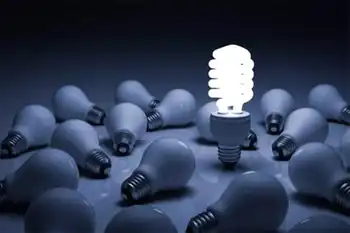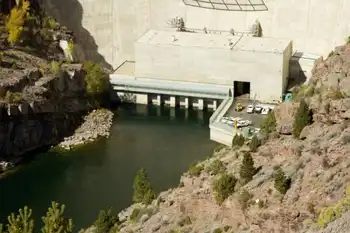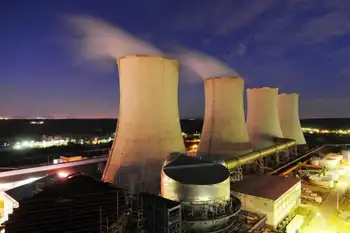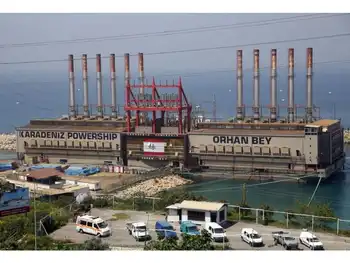New York - July 24, 2003 - New York State Governor George E. Pataki today announced that he has received commitments from the Governors of nine northeast states to join New York State in a regional strategy to reduce carbon dioxide emissions from power plants. The initiative proposed by the Governor would involve developing a market-based emissions trading system to require power generators to reduce emissions.
"By taking bold steps to control pollution and investing in the development of alternative and more efficient energy initiatives, New York State has led the nation in improving air quality," Governor Pataki said. "I thank the leaders of northeast states who have joined New York in this historic initiative to build on those efforts by working together to develop an effective regional strategy to further reduce harmful emissions." On April 25, 2003, Governor Pataki sent letters to 10 governors encouraging their participation in the regional strategy. The Governor directed Public Service Commission Chairman William M. Flynn and Department of Environmental Conservation (DEC) Commissioner Erin M. Crotty to contact their counterparts and gauge their respective state's level of interest within 90 days. The two agency leaders provided an assessment of the progress made on the initiative. To date, the governors of Connecticut, Vermont, New Hampshire, Delaware, Maine, New Jersey, Pennsylvania, Massachusetts, and Rhode Island have sent letters expressing their interest in working with New York to develop a cap and trade program for carbon dioxide emissions from power plants. Maryland has indicated that they may participate in the discussions at a later date. Ashok Gupta, Director of the Air and Energy Program for the Natural Resources Defense Council said, "With such a positive bi-partisan response to address climate change pollution, the Northeast can now move expeditiously to establish a framework for a multi-state cap and trade program for reducing carbon dioxide emissions from power plants. The debate in the Northeast is no longer about climate science but how best to use existing technologies to reduce emissions and minimize energy costs at the same time." The Greenhouse Gas Task Force was formed by Governor Pataki in June 2001 to assist the state in developing policy recommendations and strategies to reduce New York's greenhouse gas (GHG) emissions. A majority of the Task Force members agreed and recommended that the State pursue a regional approach to reducing emissions. An independent facilitator, the Center for Clean Air Policy, based in Washington D.C., issued a report based upon the Task Force process in April. James T. B. Tripp, general counsel of Environmental Defense, a national environmental organization, and a member of Governor Pataki's Greenhouse Gas Task Force said, "We strongly support the Governor's exciting, multi-state, regional power plant carbon cap initiative. Since the nine northeastern states that have joined this initiative have about 1/5 of the nation's population, this is not only a major regional initiative, but a critical national precedent as to how to deal with global warming. Environmental Defense helped to pioneer the use of cap and trade systems to reduce sulfur dioxide emissions from power plants as part of the federal Clean Air Act amendments of 1990. The tough challenge lies ahead as these states undertake discussions to set multi-state power plant carbon baselines, the basis for a cap and trade system, that are both fair and efficient. We are prepared to help these states with the best science and economics available to meet this challenge with the hopes that this system can be in place within two years." Paul J. Elston, board member of the League of Conservation Voters and a member of the Greenhouse Gas Task Force, said, "The positive response from almost all of the northeastern governors to work toward a regional carbon cap-and-trade program is great news for the environment. We thank Governor Pataki for outstanding leadership on the important national and international issue. This effort could define the roadmap and set the standard for a national program." Gavin J. Donohue, President and Chief Executive Officer of the Independent Power Producers of New York said, "The New York power generating industry is pleased that New York and the other Northeast states recognize air pollution is a regional problem that needs a regional solution. I thank Governor Pataki for this initiative, and Chairman Flynn and Commissioner Crotty should be commended for bringing together such diverse interests to work toward a common plan of action." DEC Commissioner Erin Crotty said, "Governor Pataki's vision and leadership have made New York a national leader in improving air quality. With a collaborative approach among northeast states, we can make tremendous strides in taking pollutants out of our skies. The support we have witnessed in response to the Governor's proposal is an important first step as we foster partnerships that will work toward improving public health and the environment through reductions in carbon dioxide emissions." New York State Public Service Commission Chairman William M. Flynn said, "Governor Pataki's recognition that regional cooperation among states is a key to developing effective strategies for reducing carbon dioxide emissions has received broad support from our neighboring states. Just as electricity is being traded in larger, more regional markets, it makes sense to move forward with a regional cap and trade program for emissions, and I look forward to working with my counterparts on this important issue." Leaders from the states participating in the regional initiative will next convene in September 2003 to begin detailed discussions on the development of the initiative. The overall goal of the group is to reach an agreement by April 2005 on a flexible, market-based cap and trade program.
On April 25, 2003, Governor Pataki sent letters to 10 governors encouraging their participation in the regional strategy. The Governor directed Public Service Commission Chairman William M. Flynn and Department of Environmental Conservation (DEC) Commissioner Erin M. Crotty to contact their counterparts and gauge their respective state's level of interest within 90 days. The two agency leaders provided an assessment of the progress made on the initiative.
To date, the governors of Connecticut, Vermont, New Hampshire, Delaware, Maine, New Jersey, Pennsylvania, Massachusetts, and Rhode Island have sent letters expressing their interest in working with New York to develop a cap and trade program for carbon dioxide emissions from power plants. Maryland has indicated that they may participate in the discussions at a later date.
Ashok Gupta, Director of the Air and Energy Program for the Natural Resources Defense Council said, "With such a positive bi-partisan response to address climate change pollution, the Northeast can now move expeditiously to establish a framework for a multi-state cap and trade program for reducing carbon dioxide emissions from power plants. The debate in the Northeast is no longer about climate science but how best to use existing technologies to reduce emissions and minimize energy costs at the same time."
The Greenhouse Gas Task Force was formed by Governor Pataki in June 2001 to assist the state in developing policy recommendations and strategies to reduce New York's greenhouse gas (GHG) emissions. A majority of the Task Force members agreed and recommended that the State pursue a regional approach to reducing emissions. An independent facilitator, the Center for Clean Air Policy, based in Washington D.C., issued a report based upon the Task Force process in April.
James T. B. Tripp, general counsel of Environmental Defense, a national environmental organization, and a member of Governor Pataki's Greenhouse Gas Task Force said, "We strongly support the Governor's exciting, multi-state, regional power plant carbon cap initiative. Since the nine northeastern states that have joined this initiative have about 1/5 of the nation's population, this is not only a major regional initiative, but a critical national precedent as to how to deal with global warming. Environmental Defense helped to pioneer the use of cap and trade systems to reduce sulfur dioxide emissions from power plants as part of the federal Clean Air Act amendments of 1990. The tough challenge lies ahead as these states undertake discussions to set multi-state power plant carbon baselines, the basis for a cap and trade system, that are both fair and efficient. We are prepared to help these states with the best science and economics available to meet this challenge with the hopes that this system can be in place within two years."
Paul J. Elston, board member of the League of Conservation Voters and a member of the Greenhouse Gas Task Force, said, "The positive response from almost all of the northeastern governors to work toward a regional carbon cap-and-trade program is great news for the environment. We thank Governor Pataki for outstanding leadership on the important national and international issue. This effort could define the roadmap and set the standard for a national program."
Gavin J. Donohue, President and Chief Executive Officer of the Independent Power Producers of New York said, "The New York power generating industry is pleased that New York and the other Northeast states recognize air pollution is a regional problem that needs a regional solution. I thank Governor Pataki for this initiative, and Chairman Flynn and Commissioner Crotty should be commended for bringing together such diverse interests to work toward a common plan of action."
DEC Commissioner Erin Crotty said, "Governor Pataki's vision and leadership have made New York a national leader in improving air quality. With a collaborative approach among northeast states, we can make tremendous strides in taking pollutants out of our skies. The support we have witnessed in response to the Governor's proposal is an important first step as we foster partnerships that will work toward improving public health and the environment through reductions in carbon dioxide emissions."
New York State Public Service Commission Chairman William M. Flynn said, "Governor Pataki's recognition that regional cooperation among states is a key to developing effective strategies for reducing carbon dioxide emissions has received broad support from our neighboring states. Just as electricity is being traded in larger, more regional markets, it makes sense to move forward with a regional cap and trade program for emissions, and I look forward to working with my counterparts on this important issue."
Leaders from the states participating in the regional initiative will next convene in September 2003 to begin detailed discussions on the development of the initiative. The overall goal of the group is to reach an agreement by April 2005 on a flexible, market-based cap and trade program.
Related News
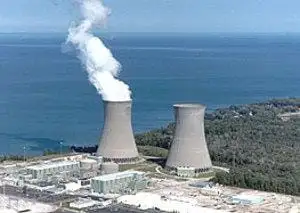
What's at stake if Davis-Besse and other nuclear plants close early?
LOS ANGELES - A national nuclear lobby wants to remind people what's at stake for Ohio and Pennsylvania if FirstEnergy Solutions follows through with plans to shut down three nuclear plants over the next three years, including its Davis-Besse nuclear plant east of Toledo.
A report issued Monday by Nuclear Matters largely echoes concerns raised by FES, a subsidiary of FirstEnergy Corp., and other supporters of nuclear power about economic and environmental hardships that will likely result from the planned closures.
Along with Davis-Besse, Perry nuclear plant east of Cleveland and the twin-reactor Beaver Valley nuclear complex west of Pittsburgh are slated…

